Hello my fellow chocoholics, welcome to paradise. This post is for you. It might be a little longer than usual, but bear with me. This post is about something every person needs – chocolate bars. Of course you can buy them at the supermarket. But you can also make them yourself. I know, I was shocked too when I found out. And then I was thrilled. Does that mean that I get to create my own personal favourite chocolate? Heck yes. It also means that I never have to worry about Christmas or birthdays anymore. What is a better present than a homemade chocolate bar?
I have to say…it takes a while. One needs patience, a thermometer and a chocolate bar form. But if you have all of that and want to try out something new – well there you go.
In order to make your own chocolate bars, the couverture needs to be tempered. This means that it needs to melt, cool down and then reheat again. It sounds more complicated than it actually is. But for the perfect result, here is a little bit of chocolate-tempering theory.
Couverture is composed of six different crystals. But only one is perfect for making chocolate bars. The goal of tempering chocolate is to get that one form of crystal that makes the result smooth and shiny. If chocolate is not tempered before adding the other ingredients and putting it into the form, the cocoa fat would rise to the surface and make the bars look unattractive and moldy.
The most important thing to keep in mind when tempering chocolate is the temperature. It varies according to the type of couverture you are using.
Dark couverture:
Melt at 40 – 45°C, let cool until 28 – 30°C and reheat to 31 – 32°C.
Whole milk couverture:
Melt at 40 – 45°C, let cool until 27 – 28°C and reheat to 29 – 30°C.
White couverture:
Melt at 40 – 45°, let cool until 26 – 27°C and reheat to 28 – 29°C.
After this little theoretical part, let´s get cooking. First of all the recipe for white chocolate bars with cashew nuts, vanilla bean and cranberries.
250 g white couverture
50 g cashews
40 g cranberries
1 vanilla bean
1) Split a couple of the cashews in half. Chop the rest finely and roast in a pan without oil until they are golden brown. Cut the cranberries into little pieces. Split the vanilla bean and take out the core. Chop the couverture.
Now to the tricky part.
2) The couverture needs to be melted in a bowl set over simmering water that has a temperature of no more than 55°C. The bowl shouldn´t touch the water and no steam should be able to get to the couverture. The temperature of the water is important and should remain the same throughout the first step. Use a hot plate or the lowest heat of your stove. While the couverture is melting, keep stirring with a dough scraper. Once it is melted it should have a temperature of 40 – 45°C. If you reach this temperature, remove the bowl from the heat and keep stirring for 1 – 2 minutes.
3) Now the couverture needs to cool down. This works best of you put the bowl into a pot filled with cold water (with a temperature of max. 25°C). The bowl should touch the water, that way the cooling-down-process is a lot faster. Cool the couverture while stirring until it has reached a temperature of 26 – 27°C. If you have reached this temperature, once again, remove the bowl and keep stirring for 1 – 2 minutes.
3) The last step is to reheat the couverture until it has reached a temperature of 28 – 29°C. The difference between the temperatures is very little in the last two steps. Be careful not to overheat the couverture. If that should happen, the whole tempering-process starts from the top. To reheat the couverture, put the bowl over simmering water (see step 2). The temperature of the water should be 35°C. Remember to keep stirring. Once the couverture is at its final temperature, add the cashews, the core of the vanilla bean and the cranberries. Fill the mass into chocolate bar forms and shake carefully for the couverture to spread evenly. Decorate the bars with the rest of the cranberries and cashew halves.
Now the chocolate bars need to cool. Put them in the fridge for a couple of minutes until they start to become solid. (Careful: don´t put them directly onto the glass plates of the fridge; use a wooden board in between. The glass plates itself are too cold) After that, remove and let cool for about 2 hours before removing the chocolate bars from the form. If everything went according to plan you should have nice, shiny and firm chocolate bars. If not…oh well, no big deal, just try again. It´s easier to see mistakes on dark chocolate (like the chocolate bar being gray, dim or crumbling) than on white chocolate. That makes white chocolate perfect for the first try.
It all sounds very complex and complicated now, but trust me, it is not as hard as it might seem. Once you get the hang of it, it is actually quite easy. The importance is a good thermometer, patience and creativity. You can make chocolate bars with pretty much everything…nuts, coco, M&M´s, dark chocolate, white chocolate…you name it. In order to get you inspired, here is another recipe for dark chocolate bars with almonds and cinnamon.
60 g planed almonds
250 g dark couverture
1 tbsp. cinnamon
1) Roast the almonds in a pan without oil until they are golden brown. Chop the couverture. Melt in a bowl over simmering water and temper according to right temperature (see above).
2) Once the couverture is tempered, add cinnamon and 25 g of the almonds. Put into a chocolate bar form, decorate with the remaining almonds and let cool.
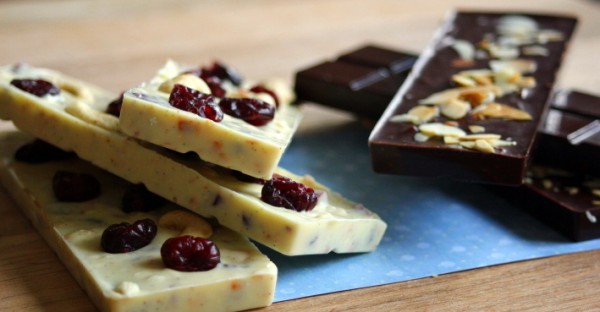
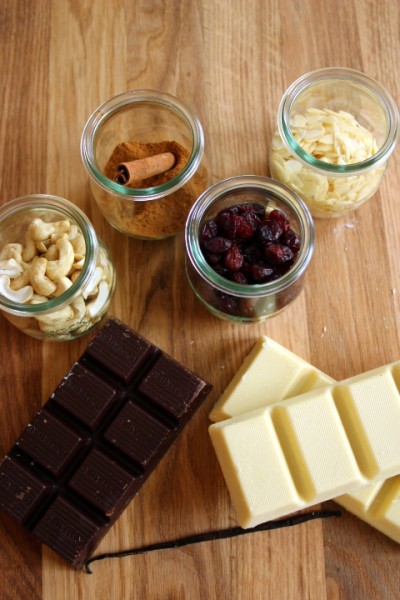
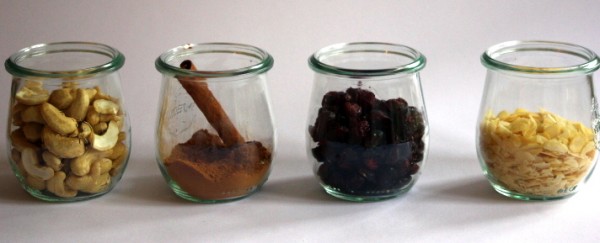
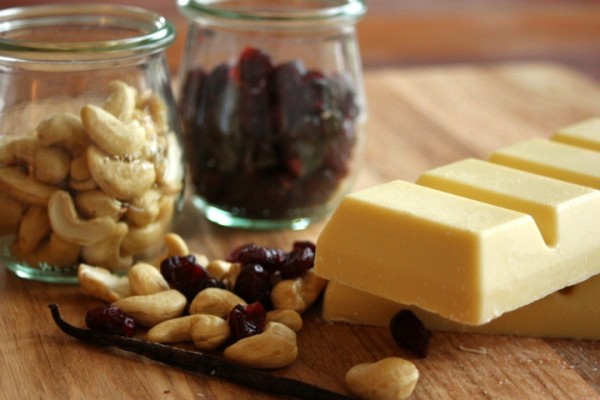
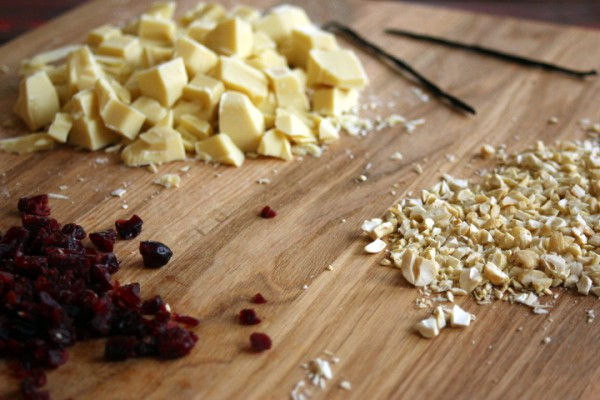
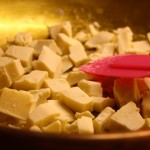
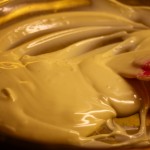
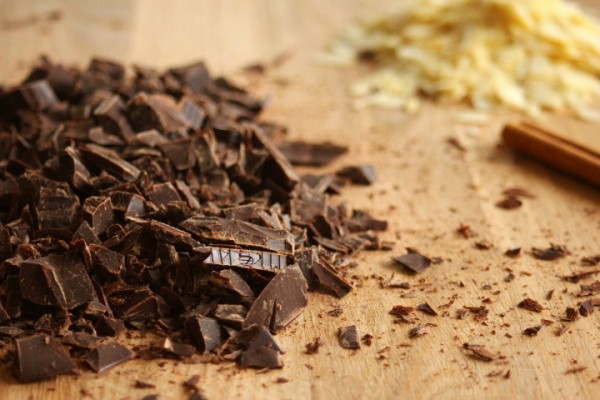
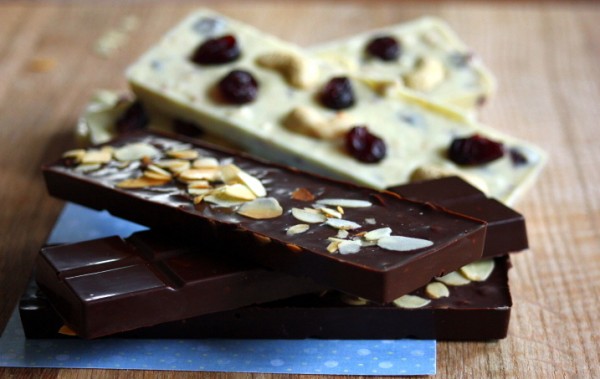
Hallo Ineke, vielen vielen Dank für deine ausführliche Beschreibung der Schokoladenherstellung, du hast mich heute wirklich gerettet. Ich habe selber einen Blog und wollte eigentlich nur ein paar Florentiner mit selbstgemachter Schokolade machen. Ich habe das auch schon mal gemacht, geschmacklich war die Schokolade top, sah aber einfach nicht wirklich schön aus. Heute war es dann noch schlimmer: Die Kakaobutter hat sich vom Rest getrennt.
Dann bin ich auf diese Seite hier gestoßen und habe alles noch einmal eingeschmolzen und so gemacht, wie du es beschrieben hast. Wie Zauberei, wo vorher auch nach zwei Stunden noch eine glänzende Masse war, ist jetzt nach zehn Minuten schon eine mattglänzende Schicht, genau wie es sein soll.
Auf meinem Blog gehe ich der Wissenschaft hinter Backen & Co nach. Diese Schokoladentemperierung werde ich bald auf jeden Fall einen Artikel widmen.
Nochmals vielen Dank und viele Grüße 🙂
Nikola
Hallo Nikola,
Freut mich das ich helfen konnte. Kochen hat manchmal schon was von Zauberei, aber das dahinter meistens nur schnöde Wissenschaft steckt weißt du wahrscheinlich besser als ich. 😉 Übrigens, großes Kompliment an deinen Blog, der ist ja ganz bezaubernd.
Liebe Grüße! Ineke